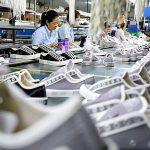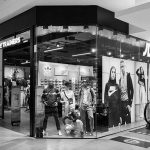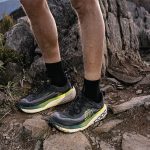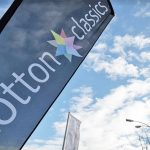On its first-quarter analyst call, management at Kontoor Brands Inc. predicted the soon-to-be-acquired Helly Hansen (Helly) outdoor and workwear brand will deliver double-digit growth in the second half of the year and laid out a four-step plan to accelerate sales growth and drive profitability improvement for the Norwegian brand.
The VF Corporation spin-off parent of the Wrangler and Lee brands also raised its expectations on the profit contribution from the Helly acquisition for the current year. More than one analyst finds it rather ironic that the VF spin-off denim business will now go head-to-head with its former parent in the outdoor space.
As reported, Kontoor, whose core business consists of the Wrangler and Lee denim brands, announced on Feb. 19 that it agreed to pay approximately $900 million to acquire the Norwegian techwear specialist from Canadian Tire. Canadian Tire acquired Helly in 2018 for CN$985 million (US $771 mm) from the Ontario Teachers’ Pension Plan, assuming an additional CN$50 million in debt.
On the first quarter earnings conference. call, Kontoor Brands Chairman, President and CEO Scott Baxter said the acquisition has cleared regulatory approval and is expected to close by the end of May.
“We expect to see an immediate benefit to 2025 revenue growth, earnings and cash flow and the long-term benefit is even greater,” said Baxter.
Helly Hansen’s worldwide revenue in 2024 was reportedly CN$894 million ($629 million), including sales to Canadian Tire Corporation, the brand’s parent since 2018. The company said 2024 EBITDA was CN$102 million ($72 million) on a Canadian IFRS basis. Adjusted EBITDA for 2024 was CN$76 million ($53.5 million) under the pre-IFRS 16 accounting standard employed by CTC at the time of the Helly Hansen acquisition.
In conjunction with the transaction, CTC also expects to continue to sell Helly Hansen products under its banner under a multi-year supply agreement with Kontoor Brands.
Updating its 2025 outlook on Helly, Kontoor expects Helly to contribute approximately $425 million to 2025 revenue post-acquisition, approximately $37 million to 2025 adjusted operating income, and approximately 20 cents to 2025 adjusted EPS, including 48 cents in the second half of the year, excluding synergies. In reporting fourth-quarter results on Feb. 25, Kontoor predicted the Helly acquisition to contribute approximately 15 cents a share to adjusted EPS.
Additionally, Kontoor on Tuesday also indicated Helly is anticipated to contribute approximately $50 million to 2025 cash flow.
Baxter said Kontoor has now established a “value creation framework” to support the Helly acquisition, built on four pillars:
- Accelerating Helly’s growth;
- Doubling Helly’s operating margin;
- Increasing capital allocation optionality; and
- Establishing Kontoor as the employer of choice.
Baxter said that as noted when the acquisition was first announced in February, Kontoor saw untapped growth for Helly in the U.S. market as it only represents a quarter of Helly’s global revenue. He said, “While it is Helly’s fastest growing [market], it remains significantly under-penetrated relative to its peers. Through a combination of wholesale and retail expansion, strong digital growth and investments in demand creation, we see a clear path to double digit growth in our home market.”
He also cited “significant opportunities” for Helly in direct-to-consumer, China, global workwear, and category expansion. Baxter added, “We expect a meaningful increase in our fundamental growth profile, greater diversification and increased penetration in the attractive outdoor and workwear markets where we have deep expertise.”
Helly’s margins are expected to expand from high-single digits currently to the mid teens through a combination of gross margin and SG&A benefits.
“We will leverage our global operating model as well as our supply chain and technology platforms,” said Baxter. “This will provide significant scale advantages for both organizations while driving greater back-end efficiency, improve decision making and increase investment capacities to support growth initiatives.”
CFO Joe Alkire said on the call that Kontoor’s “confidence in the significant value creation opportunity as a combined company has further increased.” He noted, as an example, that Helly’s freight expense is expected to decrease between 10 percent to 20 percent as the brand is linked to Kontoor’s supply chain and gains scale benefits. He noted that Helly currently operates a standalone business as part of Canadian Tire.
In the near term, Baxter said Kontoor will focus on improving Helly’s profitability and net working capital.
In April, Kontoor completed its financing of the transaction. Within 12 months, Kontoor expects to be under two times leverage and within 24 months back to pre-deal leverage, while consolidating a significant increase in earnings. Baxter added, “Long term, we will deploy the increase in cash flow potential to support our capital allocation framework, including our dividend and share repurchase programs.”
Finally, the Helly acquisition is expected to help establish Kontoor as “the employer of choice in the industry,” with attracting and retaining top talent cited as a key path to long-term success.
Baxter said Helly is proving to be a strong cultural fit, but he expects to further benefits as both companies share apparel roots. He said, “Canadian Tire has been a great steward of the business, but there has been one consistent message I’ve heard from the team above all others. Kontoor will be the first owner of the business in twenty years that operates in the apparel industry. We know the business and speak the same language.”
He added, “They have been executing at a high level on their own, but I am more confident than ever in the significant benefits as a more synergistic global brand owner.”
Kontoor’s First-Quarter Results
The update on Helly came as Kontoor delivered first-quarter results that saw earnings top analyst expectations, but sales came up short.
Consolidated company revenue slid 1 percent (flat in constant currency) to $623 million in Q1, slightly below the analysts’ consensus target of $626.3 million. On an adjusted basis, earnings per share rose to $1.20 from $1.16 a year ago and topped analysts’ estimate of $1.16 per share.
Looking ahead, Kontoor expects revenue for the year, including the benefit of Helly, to climb in the range of $3.06 to $3.09 billion, representing growth of approximately 17 to 19 percent year over year. Excluding the impact of Helly, revenues are expected to expand approximately 1 to 2 percent, below its prior outlook calling for 1 to 3 percent growth.
Alkire said that following its fourth quarter earnings call, POS trends further deteriorated with the final week of February, declining at a mid-teen rate,. Trends improved with POS with declines of approximately 1 percent in both March and April before turning positive in early May. The CFO said, “While we are encouraged by the recent improvement in POS, we have seen month-to-month variability over the last year and continue to plan the business prudently.”
Adjusted EPS for the year is expected to be in the range of $5.40 to $5.50, representing an increase of 10 to 12 percent compared to the prior year. Excluding the impact of Helly, adjusted EPS is expected to be in the range of $5.20 to $5.30, representing an increase of 6 to 8 percent compared to the prior year, consistent with the prior outlook.
Tariff Impact
Guidance doesn’t include the anticipated impact from recently enacted changes in tariffs, which is estimated to be $50 million on an unmitigated basis, including the tariff impact of Helly. Kontoor doesn’t anticipate an impact to second quarter operating income. It expects to help offset the tariff impact through a combination of targeted price increases, sourcing and production optimization, inventory management, supplier partnerships and other initiatives.
Alkire said the majority of Kontoor’s expected 2025 U. S. production volume originates from Bangladesh, Mexico, Egypt, Pakistan and Kenya. China’s exposure is immaterial as the sourcing done for its denim brands in China is directly for China. Based on currently available information, Mexico is exempt under USMCA. Excluding Helly, the unmitigated impact to operating profit in 2025 is now approximately $35 million based on the current tariffs in effect, down from its prior estimate of $50 million.
Helly Hansen is 100 percent sourced with the majority of its U.S. production volume originating from Southeast Asia, including China, Vietnam, Bangladesh and Cambodia. Including Helly, the tariff impact is expected to be $50 million.
Baxter said Kontoor is expected to benefit by becoming a “more agile organization” as a result of the supply chain disruptions over the last several years caused by the pandemic. He said that as part of its Project Genius program, an SKU-level analysis has added increased flexibility within its manufacturing and sourcing operations.
“This body of work has given us a tremendous head start and I am confident we will be able to meaningfully offset the impact from tariffs in a twelve month to eighteen-month period,” he said. “We have dealt with supply chain shocks in the past and have proven the resiliency to maintain profit and returns over time.”
Image courtesy Helly Hansen
















